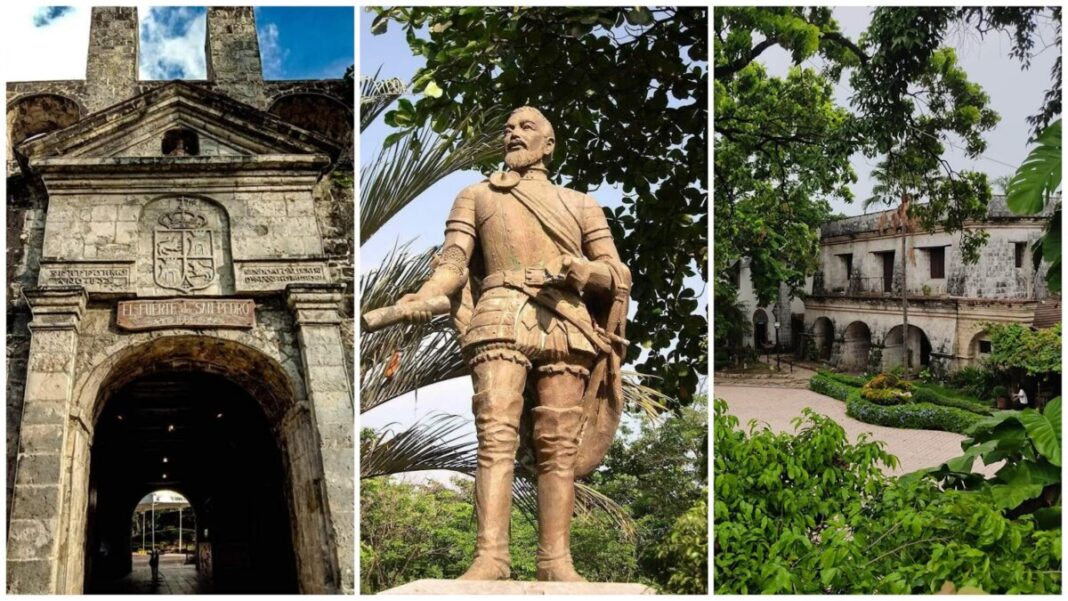Fort San Pedro stands tall not just in stone but in every chapter of Cebu’s past turned present.
In a place standing guard over Plaza Independencia in Cebu City is Fort San Pedro, which represents the Philippines’ oldest surviving triangular bastion fort. Spanish conquistador Miguel López de Legazpi initiated its construction on May 8, 1565, which began as a wooden structure. It underwent a reconstruction in 1738, utilizing coral stones to protect against Muslim raids. This fortress, with its three bastions La Concepción, San Miguel, and Ignacio de Loyola, they served as the Spanish colony’s first line of defense before assuming various roles in Philippine history. Today, this National Historical Landmark operates as a museum and park under the joint stewardship of Cebu City and the Department of Tourism, preserving over four centuries of military and cultural heritage.
Concrete Proof
The fort’s weathered coral stone walls hold a treasure of historical artifacts and architectural features. Visitors pass through an ornate stone gate that has a Spanish royal crest and a Santo Niño niche before encountering fourteen preserved cannons, some of which are still mounted in their original defensive positions. On the on-site museum displays Spanish-era weaponry, navigational instruments, and portraits of national heroes, while a dedicated photo gallery chronicles Cebu’s urban evolution. The central courtyard frequently hosts cultural performances beneath the tropical sun, bounded by three bastions transformed into themed gardens that feature medicinal herbs, aromatic spices, and fluttering butterflies, creating a living contrast to the fort’s martial origins.
Fort’s Got Receipts
The evolution of Fort San Pedro mirrors Cebu’s complex history, having served successively as a Spanish garrison, a Filipino revolutionary base, an American barracks, and a Japanese military hospital. Following World War II, the structure endured periods of neglect as a school and makeshift zoo before the 1960s restoration efforts reclaimed its historical significance and preserved it. The fort’s coral stone construction techniques demonstrate early Spanish colonial engineering, while its triangular design, a rarity among Philippine fortifications, this reflects European military architecture adapted to local conditions. With these layers of history, the fort cemented its status as Cebu’s most enduring physical connection to its colonial past.
Fort the Play
Open daily from 8:00 AM to 7:00 PM, Fort San Pedro welcomes visitors with affordable admission, with discounts available for students and seniors. The place offers knowledgeable guides who offer tours that bring to life the fort’s strategic importance during various conflicts. These elevated bastions provide panoramic views of Cebu’s harbor and skyline. By asking them, a popular spot for photographers to capture golden hour vistas. Its central location creates a natural harmony with nearby historical sites, such as Magellan’s Cross and the Basilica del Santo Niño, which allows visitors to craft comprehensive heritage walking tours. Modern amenities, including paid parking and accessible pathways, ensure comfortable visits for all ages.
How To Get There?
Exact Location: A. Pigafetta Street, Cebu City
- By Commute: From Cebu City proper, such as Colon Street or Fuente Osmeña, ride a jeepney bound for the Pier Area. Ask the driver to drop you near City Hall or Plaza Independencia. From there, it’s just a short 3–5 minute walk to the fort’s entrance.
- By Car: If you’re driving from downtown Cebu, simply enter “Fort San Pedro Cebu” into navigation apps like Waze or Google Maps. It’s about a 10-minute drive from Colon or Fuente, depending on traffic. Parking is available around Plaza Independencia at a minimal fee.
If you think that this is all just stone and mortar, then let me guide you to Fort San Pedro. This place stands as Cebu’s witness to the flow of history, from the Spaniards to Jetliners soaring overhead. Its walls contain artifacts, and for the collective wealth of the city, have been transformed from a colonial outpost to a vibrant place. Fort San Pedro continues to showcase its centuries of beauty, welcoming curious minds, and its legacy is preserved for generations to explore.

